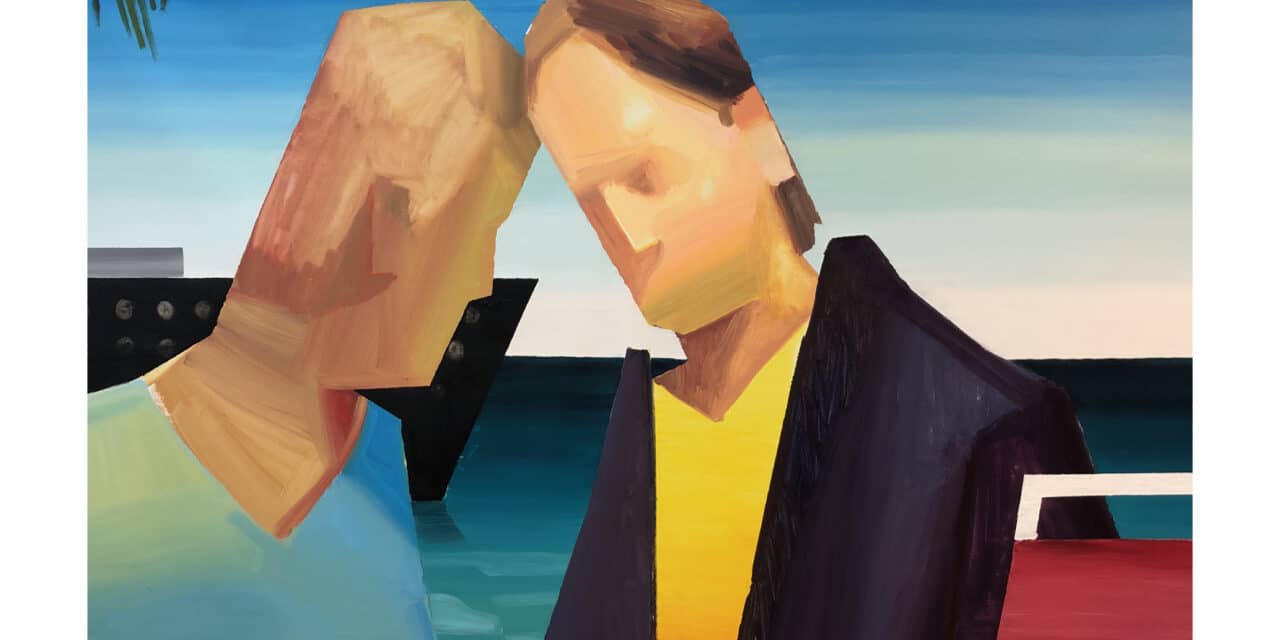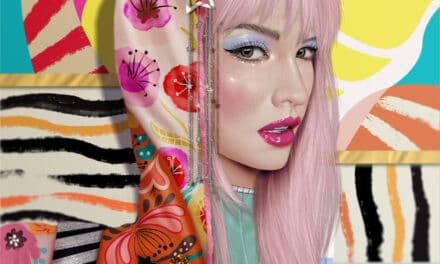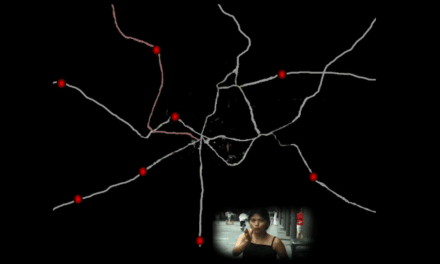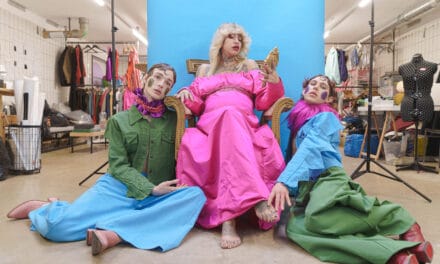There is something peculiar about those little, private art galleries. Being in their majority rather small, casually wedged between clothing boutiques and coffee-shops, located in fancy neighborhoods, they usually manage to escape the crowds of tourists hungry for big names and every city guide’s ‘must see’ spots. They just exist, humbly completing the urban landscape with their presence, attracting only those who chose to know about them: locals, modern art enthusiasts, and a given gallery’s acquaintances.
That is the case of We Collect, a small art space based in the chic district of Salamanca in Madrid, whose last opening was filled to the brim with people who seemed to be perfectly familiar not only with the exhibited objects themselves, but also with their authors. Titled GEN Z. Spanish Wet Painting, the exhibit is an exploration of work produced by the youngest active generation of Spanish artists, aimed at understanding how their specific mentality, worries, joys, and thrills translate into their creative expressions:
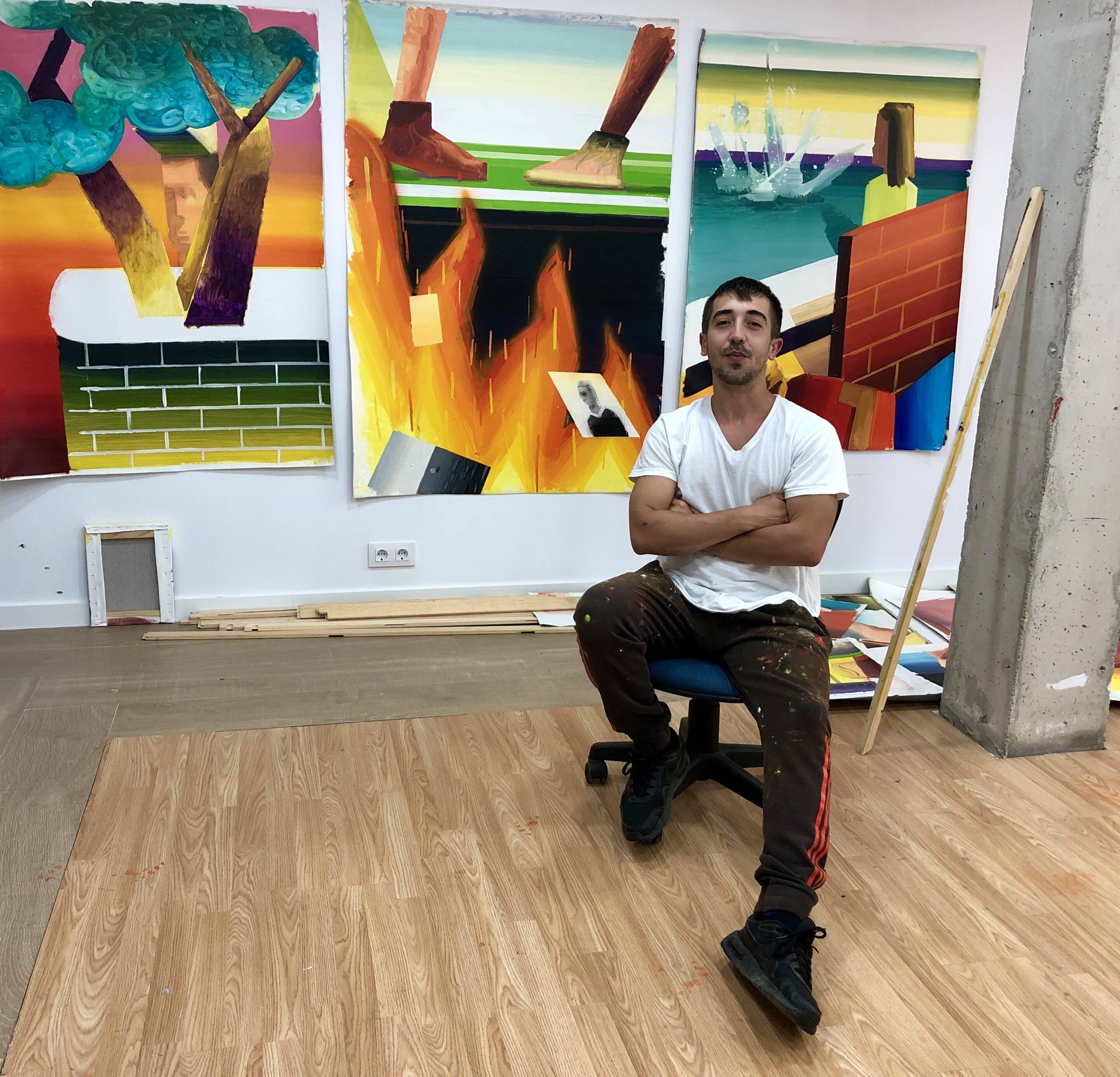
They are only in their early twenties and already constitute the future of art. – One of the show’s curators, Enrique del Río, says – They were born between 1994 and 2010 and have never lived without the internet. This hypercognitive generation, always exposed to technology, social networks and mobile screens, is taking over from the no longer so young millennials. Generation Z is beginning to fully enter into the world of art with its own standards and is already making its presence felt. They are practical, realistic, globally minded. [They] live diversity and feel comfortable, and very much so, with any virtual experience. This most digitized generation in history, however, seeks refuge in painting.
The first chapter of the exhibit, which runs from May 18th until July 2nd, collects paintings by 10 artists (the youngest of whom is 24 years old) and will be followed by the second part (July 5th – August 26th), presenting creators of a very similar age demographic. Even though each of them only displays one singular work, making the show a true embodiment of the ‘quality over quantity’ approach, the May opening enjoyed great popularity among an audience of an average age corresponding to that of the artists, consisting mostly, without a doubt, of their friends and family members. It was this audience precisely that caught particular attention: in the way they dressed, talked and carried themselves, they seemed to be representing everything the gen Z stands for. It was a charming to observe, symbiotic effect between the paintings, the artists, and the public, all merging together to raise a point concerning the nature of the relationship that the gen-Zers establish with the art, thus demonstrating the substantial place the latter occupies in the social reality.
Ramón Muñoz, a 24-year-old from Cádiz, Spain, takes part in the first chapter of the show and has agreed to share his take on what it means to be a gen Z painter:
If I had to define this generation, it would be by the theme of the screen: we are a generation that actively owns a public profile and is therefore aware of creating a public image. What I mean by that is this second face that we show to the public through the screen and that is extremely important to us. I would say that for some people it is even more important than what they really experience in their day to day. Overall, I would regard my generation as one receiving and acting upon more digital than natural stimuli.
While acknowledging his belonging to the generation Z, Ramón tries, however, to reduce the potential notorious risks of digital stimulation, and makes an effort to keep some distance from the overbearing omnipresence of ‘the screen’: he practices regular escapes into the nature, likes to appreciate a beautiful sunset every now and then, and actively pursues what he calls the ’natural stimuli’. Nevertheless, his condition of a gen-Zer implies a certain framing to his work, especially striking in his use of color and very persistent universalisation of facial features.
I was always interested in strong contrasts and when I studied classical works of art at the university, I focused mainly on them. – says the artist regarding his understanding of color in his work – After all, as the screen is always present in our lives, I started by analyzing the effect created by the exposure to the screen to comprehend what it is that attracts attention there, what it is that generates this contrast. I came to understand how colors interact, how they complement each other. I really wanted to bring this digitization element to my paintings, and eventually it has become one of the major motives of my work.
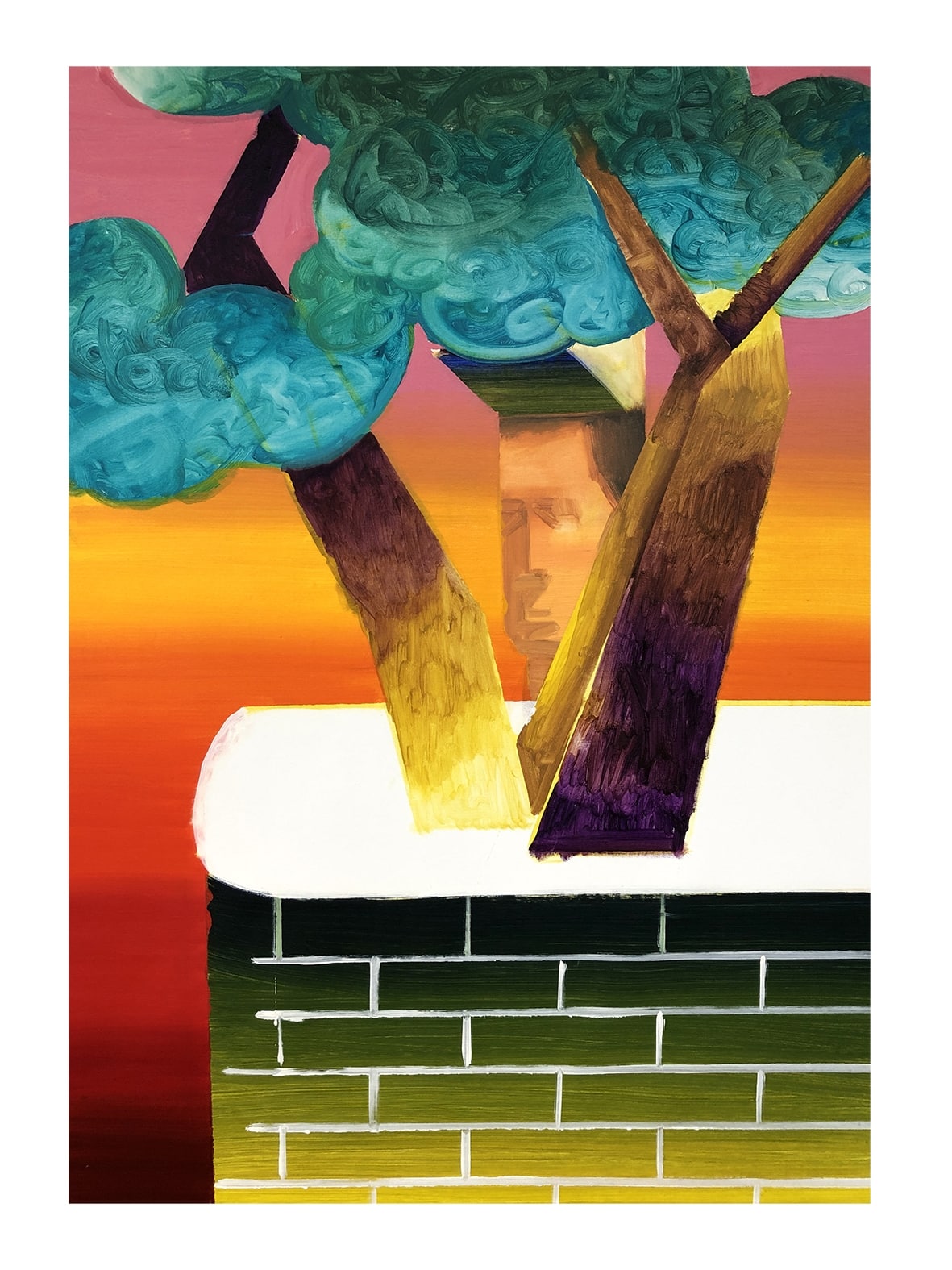
Ramón is a graduate of Fine Arts at the University of Seville and has been an active creator for about 8 years. Among his greatest artistic influences, he lists Ana Barriga, Imon Boy and Edward Hopper, but in the end, like most artist and creators, Ramón finds inspiration mainly in his direct surroundings, current social conditions and concerns, the most prominent aspects of which are likewise reflected in his works: his visible fixation on the generally understood theme of the screen translates into the bold and sharp color compositions, and the homogenizing, detaching effect of social media has partially influenced the way he depicts human faces.
Standing out as one of the most coherent features of his creation, the anonymized, somewhat distorted faces of the figures provide them with a dimension that is both universal and ambiguous. Deprived of any individualizing particularities, Muñoz’s representations of the human being approach the archetype of everyman, with whom each spectator can feel identified.
The human face is something that I have always kept very much in mind. I am fascinated by both the texture of the skin itself and the light reflections, how they adapt to our physiognomy and how they play with all the facial expressions. However, it was never appealing to me to paint a person as such, I didn’t want my figures to be recognizable, directly linked to someone specific. What interested me was giving them this anonymous touch, also because I want everyone to be able to see themselves reflected in these faces. In the end, it’s all about establishing an emotional connection. What I’m looking for is to create an image as global and universal as possible, and not to represent something already well defined.
His penchant for art first arose in the world of graffiti, a fact significant insofar as it clearly explains his inclination towards intensely saturated colors, geometric forms, and, understandably enough, the predominant subject matter of his works: the everyday life. Once again, digital presence is hard to overlook in this context, as it is evidently an intrinsic part of gen Z’s daily reality. There is, however, one another explanation behind this particular theme preference of his: Ramón is a true follower of the ‘capture the moment’ philosophy, and he finds a lot of beauty and artistic potential in the ephemeral, seemingly mundane, bits of our existence. This is similarly the reason for his constant urge for natural stimuli, which are in essence transitory and unrepeatable, but also fully absorbing and sensorially engaging.
It seems to me that when we perceive something digitally, through the screen, of the five senses that we have, we are only left with one, two at most. When eliminating the touch, the smell, and the taste, we remove dimensions from the perception, which makes the interaction with art less complete. After all, a painting is a very material construct, and actually feeling the substance composing it seems very important to me. That is why I crave direct contact with nature so much and I sincerely hope that I am not the only one. We, the gen-Zers, live our own reality, one that is new and different, which doesn’t mean it is inherently bad or disruptive. But we are undoubtedly overstimulated and overly exposed to the digital world, and we need to find our own way to counterbalance it.
Ramón finds refuge in hikes, beaches, and sunsets, but he also finds it in his creative work. Like many before them, his generation uses art as the ultimate means of expression: it’s their response to endless crises and to the overwhelming sense of instability. Gen Z painting is, indeed, very reflective of its creators: vivid and varied, somewhat inconsistent, but above all bittersweet in its persistence in combating anxiety with a large dose of fun.

